- 25 January 2016
- Magazine
-
(아름다운 인생) 코끼리와 상어가 있는 데서 수영한다는 거아름다운 인생/아름다운 삶 2016. 1. 26. 11:11
출처: http://www.bbc.com/news/magazine-35300384
Swimming with elephants and sharks
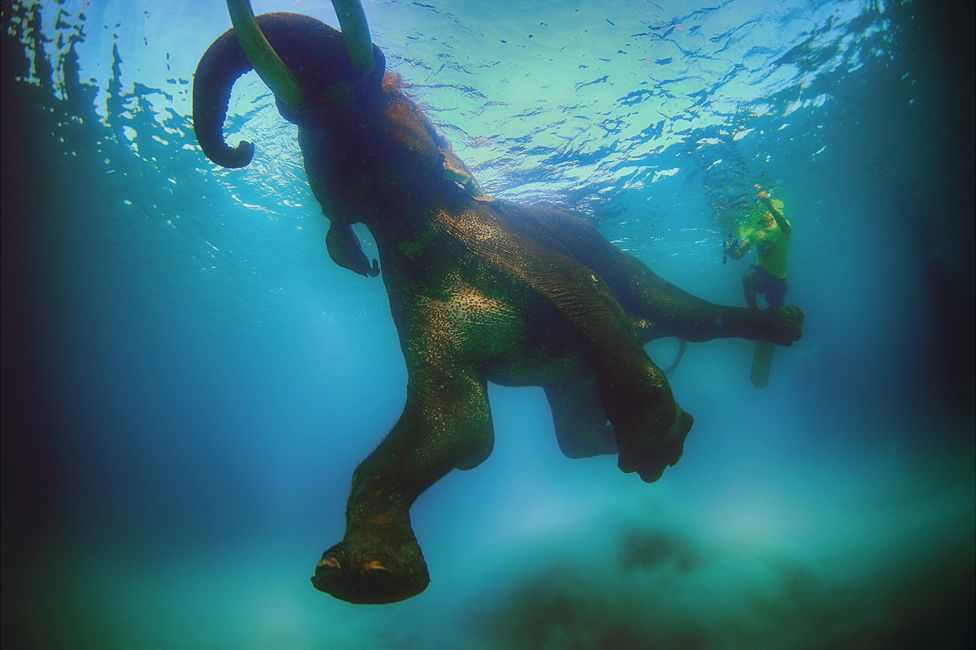 Ali Bin Thalith
Ali Bin ThalithAli Bin Thalith grew up by the coast in Dubai where both his father and grandfather were pearl divers. He spent much of his childhood either in the water or watching Jacques Cousteau films - since then he's become a photographer, specialising in underwater images.
Swimming with an elephant off the Andaman Islands in the Indian Ocean "was a terrifying moment," says Ali Bin Thalith, "but one one of my best experiences".
He got his first camera at the age of 18, but didn't think of combining photography with diving for another 10 years, when his brother suggested taking pictures of sand gazelles swimming near the island where he worked.
"I waited and waited, and then one day, very early, about 20 to 30 of them crossed between islands. It was a hard photo to take. They are good swimmers."
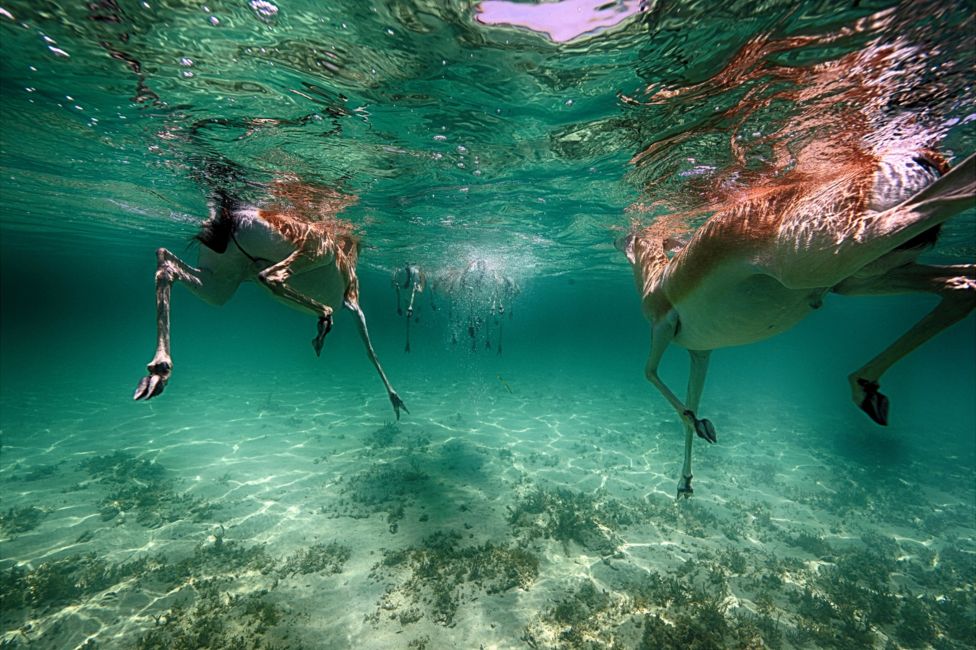 Ali Bin Thalith
Ali Bin ThalithBin Thalith is now publishing a collection of his most striking images. one of my best places to dive is Sipadan in Malaysia - I had just finished a dive there when suddenly a young water monitor lizard appeared. "She had been carried by the current and wanted to rest on our equipment. She was really tired. We took her to the island behind me in the photo."
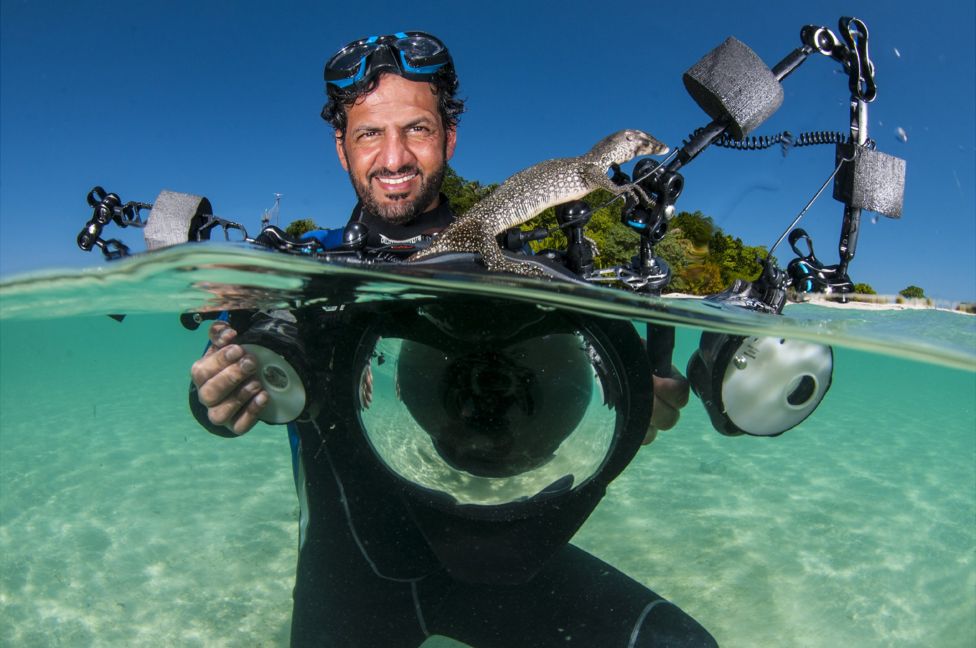 Ali Bin Thalith
Ali Bin ThalithSharks - like these in the Bahamas - he says, "give you a big message that they own that place - it's like a game".
 Ali Bin Thalith
Ali Bin Thalith
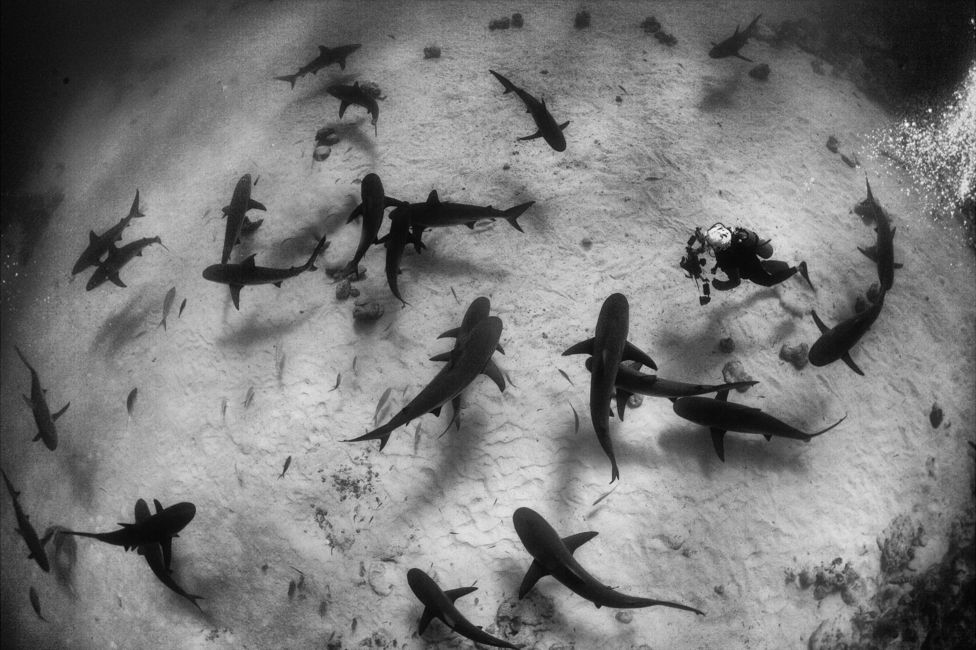 Ali Bin Thalith
Ali Bin ThalithThe boxfish uses its mouth to blow tiny jets of water into the sandy seabed, stirring up small invertebrates. It can also be deadly to other fish, releasing a poisonous substance from its mucous glands when it feels threatened.
 Ali Bin Thalith
Ali Bin ThalithThe boxfish was photographed in Indonesia, as were the striped triplefin and pygmy seahorse below.
 Ali Bin Thalith
Ali Bin Thalith
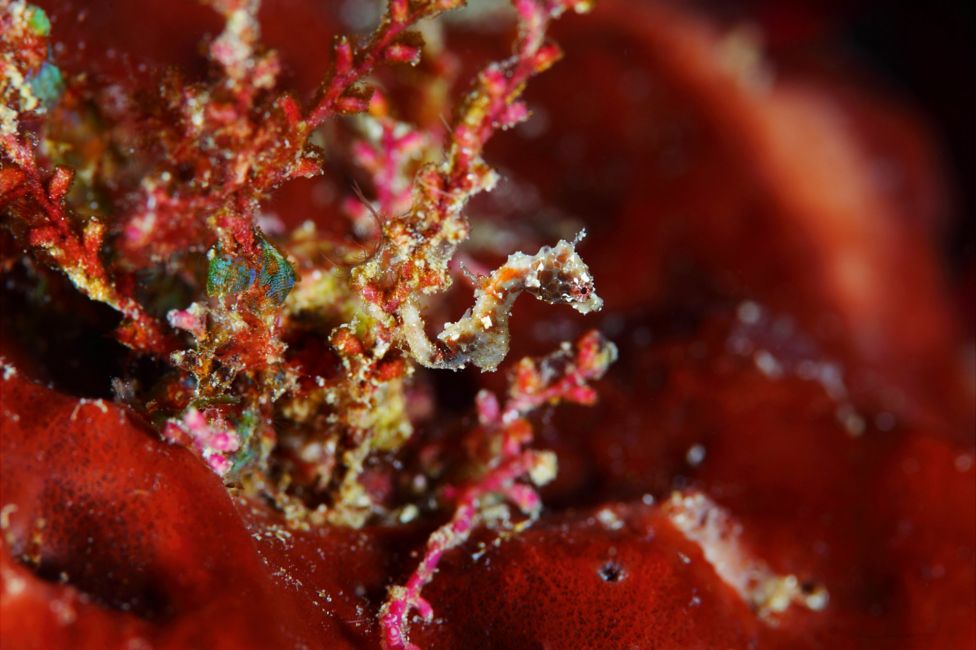 Ali Bin Thalith
Ali Bin ThalithSome creatures, such as the coconut octopus which can be found off the Philippines, are often more active at night, says Bin Thalith.
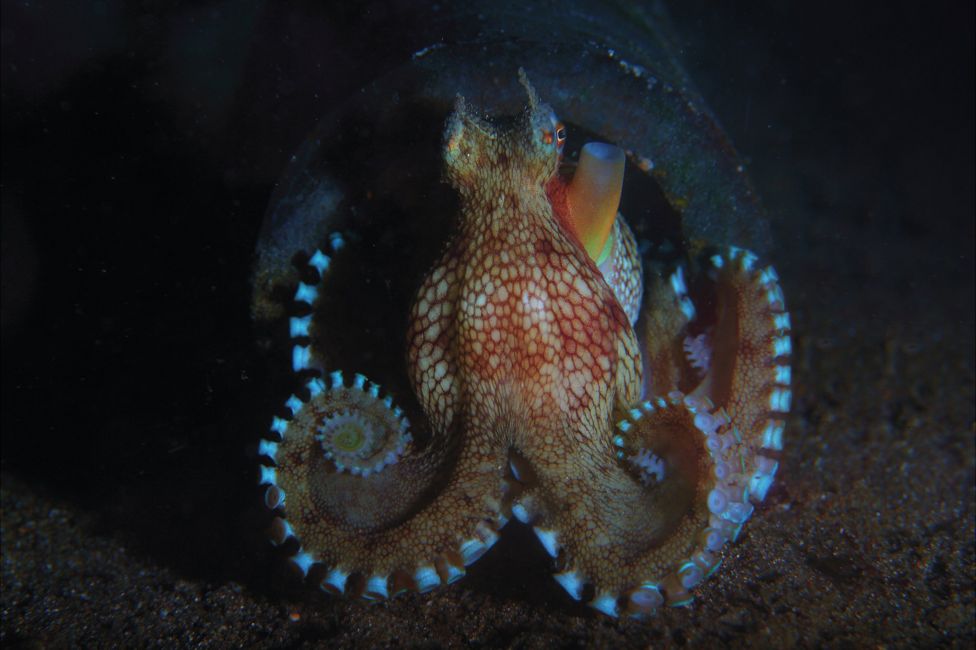 Ali Bin Thalith
Ali Bin ThalithA pair of mandarin dragonet at sunset in Sulawesi, Indonesia, and a nearby coral reef.
 Ali Bin Thalith
Ali Bin Thalith
 Ali Bin Thalith
Ali Bin ThalithAtlantic bluefin tuna often weigh up to 400kg each and can swim at 43mph (70km/h). "The fisherman we were with thought we needed some more action, so he threw sardines in - the tuna went crazy."
 Ali Bin Thalith
Ali Bin ThalithBigeye trevally are found in tropical waters - Bin Thalith photographed this school off Sipadan Island, Malaysia.
 Ali Bin Thalith
Ali Bin ThalithA bigfin reef squid in the Philippines was chasing plankton illuminated by Bin Thalith's light, providing a perfect opportunity to catch the creature in action.
 Ali Bin Thalith
Ali Bin ThalithA pink skunk clownfish, guarding its host sea anemone in Indonesia, has a layer of mucus on its skin to protect it from the anemone's stinging tentacles.
 Ali Bin Thalith
Ali Bin ThalithA crocodilefish in Malaysia sticks close to the seabed where it is well camouflaged.
 Ali Bin Thalith
Ali Bin ThalithAnother well-camouflaged creature - a crinoid shrimp - can be seen left of centre, below.
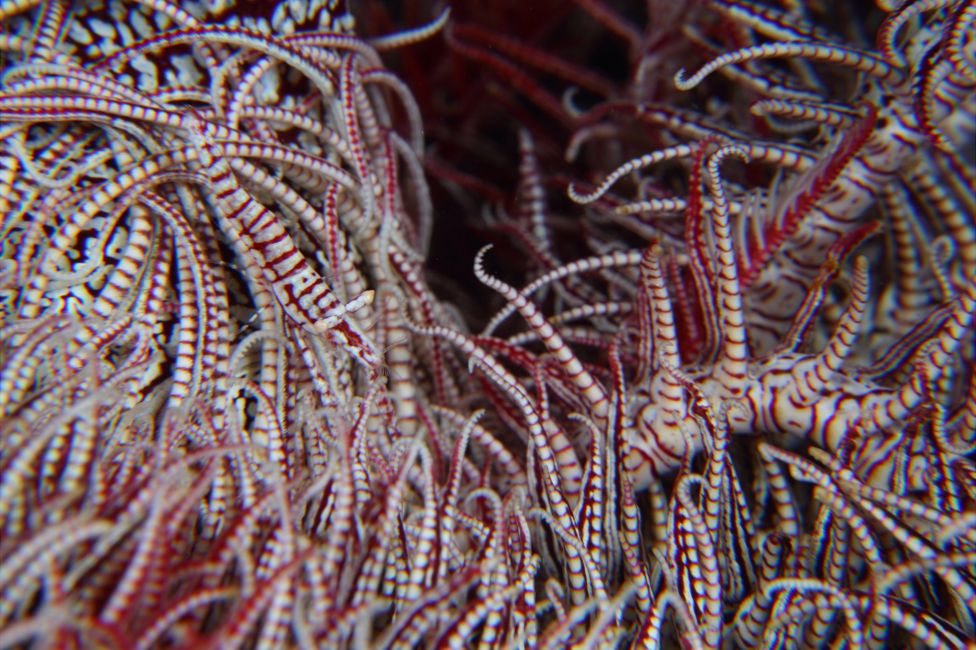 Ali Bin Thalith
Ali Bin Thalith"When you are approaching these creatures, you have to give them signals that you are not a danger to them," says Bin Thalith. "Stay calm, no sudden movements. And wait a few minutes until you take the photo, so they feel safe.
"This scribbled pipefish was off Cebu in the Philippines. He just landed on that brain coral, and he was just lovely."
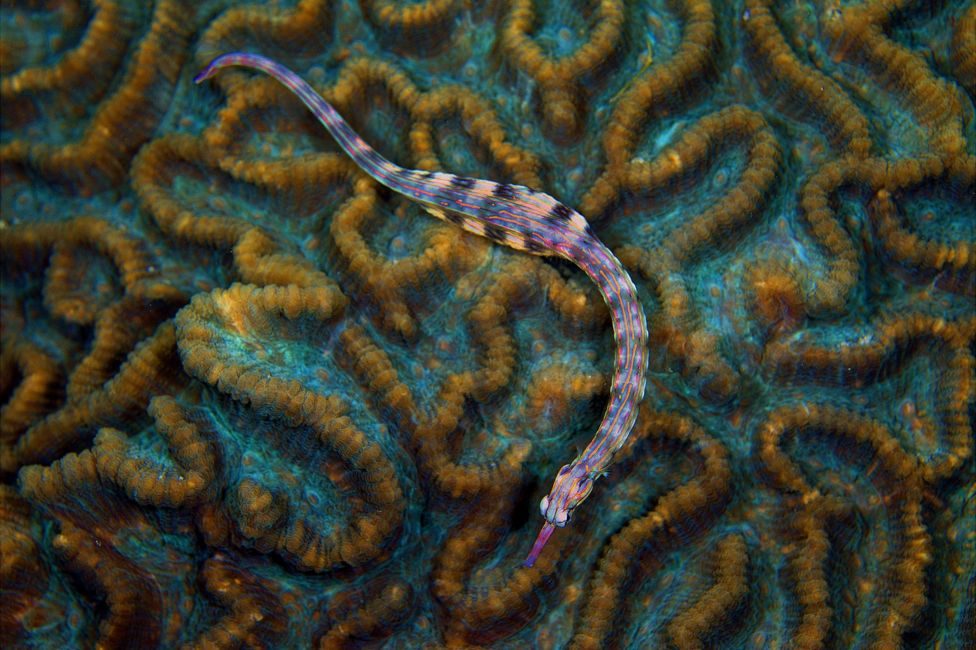 Ali Bin Thalith
Ali Bin ThalithIn West Papua, Indonesia, Bin Thalith swam into a cave which divers tend to avoid. "I was about to leave when suddenly an octopus flew in front of me. He gave me my moment - with the entrance to the cave illuminated in the background."
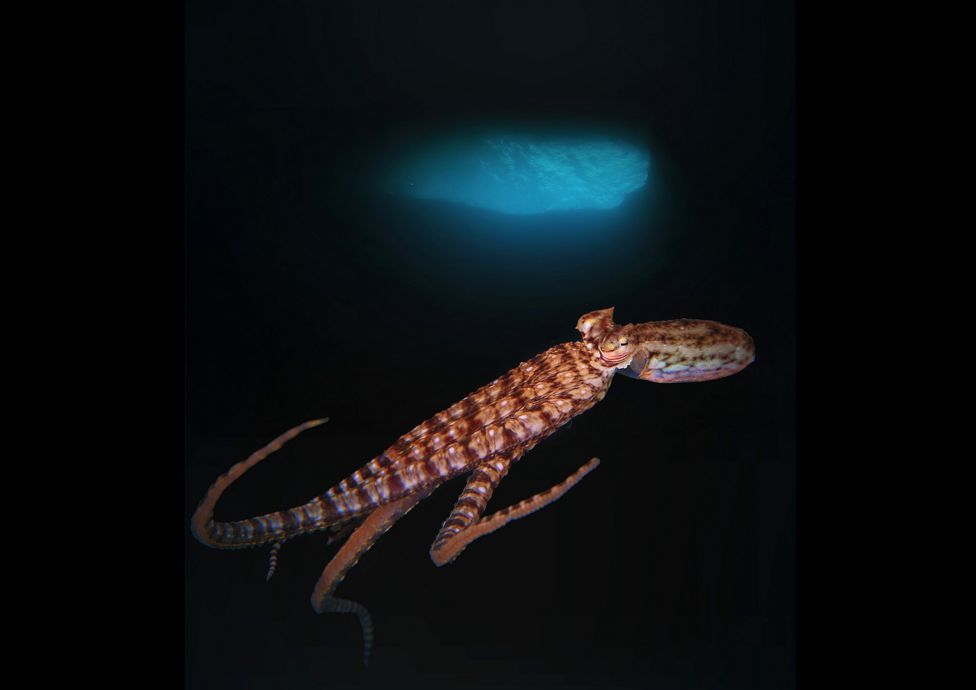 Ali Bin Thalith
Ali Bin ThalithThe squat shrimp - pictured on an anemone in the Philippines - is also known as the "sexy shrimp" because of its unusual body movements. It sways its abdomen back and forth in a dance-like rhythm.
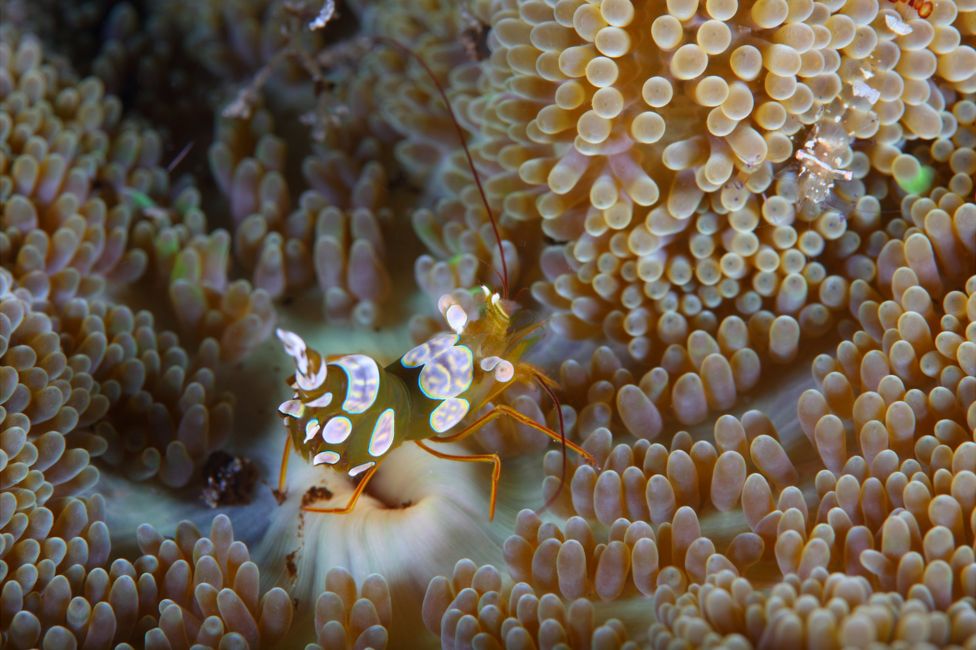 Ali Bin Thalith
Ali Bin ThalithTruly, Madly, Deeply by Ali Bin Thalith is published on 1 February 2016.
All images subject to copyright.
Subscribe to the BBC News Magazine's email newsletter to get articles sent to your inbox.
'아름다운 인생 > 아름다운 삶' 카테고리의 다른 글
(아름다운 인생) My mother's favorite flower 우리 엄마가 좋아했던 꽃 (0) 2016.03.27 (아름다운 인생) 바닐라 요구르트와 행복의 비밀 (0) 2016.02.22 (아름다운 인생) 2015년 현재 전세계 최고층 빌딩 (영문자료) (0) 2015.11.14 (아름다운 인생) 시성식과 출중해야 된다는 강박관념 / 밝은 하늘 (0) 2015.10.20 (아름다운 인생) 영화<The Great Escape>의 실제모델, 위대한 도망자 윌리엄 애쉬 (0) 2015.09.01